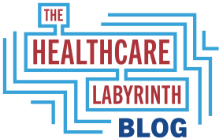A late November bipartisan letter from Sens. Elizabeth Warren, D-MA, and Mike Braun, R-IN, to the Health and Human Services (HHS) Office of Inspector General (OIG) has many wondering if lawmakers and policymakers will open up a new regulatory front that will bring heightened scrutiny of health insurers’ finances and internal contractual relationships.
Let’s give some history first before diving deeper into the issue.
- The Biden administration and many others are worried about the massive consolidation that is ongoing in the healthcare provider and payer world. New regulations will mean much greater oversight over proposed mergers and acquisitions. This has been a major push of the Biden administration, Democrats in Congress, and to a lesser degree Republicans as well. Some studies clearly point to an increase in costs (and sometimes a drop in quality), especially with hospital acquisitions.
- Payers are involved in a great deal of vertical integration. Horizontal integration in the payer world would be when one plan buys another. Vertical integration occurs when a plan buys entities in the healthcare channel that supply services to the health plan. Three notable examples are: (1) Pharmacy Benefit Managers (PBMs); (2) Pharmacies, including specialty pharmacies; and (3) Physicians and other providers.
- Insurers have historically delegated services to various entities. This occurs with PBMs and certain other service vendors (behavioral health, dental, hearing as well as entities that specialize in managing high-cost services). This can occur whether health plans own these entities or not. The entities may be given a set per-member-per-month (PMPM) fee or percentage of revenue, with the entity managing the services delegated and keeping the difference as profit. In addition, many plans enter into partial or global risk fund arrangements with providers. Sometimes these providers are explicitly delegated or simply agree to accept risk on services consumed by assigned members. They, too, can be owned by the health plan or not. These providers or provider groups (often primary care physicians) receive a percentage of premium for each member. These agreements usually include both medical costs and quality performance metrics. If they hit them, they keep some or all of the delegated service revenue. Sometimes, they are penalized if there are financial losses or misses.
- A reform in the Affordable Care Act (ACA) mandated that insurers spend between 80% and 85% (depending on the line of business and product) of premium on medical expense. This is known as the minimum medical loss ratio (MLR) rule. With the exception of self-insured ERISA employer groups and welfare funds (which control the funds themselves and insurers are not at risk but simply administer benefits), the minimum MLR hits almost all other insurance products. If an insurer does not hit the minimum MLR, the insurer has to rebate the difference between the MLR benchmark and the amount spent to either a member, employer group, or state or federal program sponsor, as applicable.
With this set up, what does the letter say? Warren and Braun want the HHS OIG to open an investigation on MLR gaming. They are reacting to a recent Brookings Institution analysis and Wall Street Journal (WSJ) report showing the extent of contracting by major insurers with their own subsidiaries and the impact that could have on costs in the healthcare marketplace, especially for consumers. The letter alleges that certain insurers are using these arrangements to evade the minimum MLR rule. In effect, they say insurers are having the subsidiary hike certain prices that the insurers then contract for so as to register a higher medical expense. This could be done whether or not the subsidiary entity is at risk or not. The money is not paid back in a MLR rebate and the money accrues to the benefit of the overall entity.
It, too, is having a major impact on prices paid by consumers. The letter cites the WSJ finding that there were significant markups/higher costs of generic drugs at specialty pharmacies owned by CVS Aetna, Cigna, and UnitedHealth compared with costs for the same drugs at Mark Cuban’s Cost Plus (Oh my, Cuban strikes again! He is making waves in the industry!). The Journal says Cigna, CVS Aetna, and UnitedHealth charged 27.4, 24.2, and 3.5 times more, respectively, than Cost Plus across a selection of nineteen drugs. Here is one example cited: the generic version of Tarcera, a lung cancer drug, costs only $73 a month at Cost Plus, compared to a staggering $4,553 a month for the brand-name version. But here is what two of the companies’ subsidiaries charge for the generics via the internal contracting with the insurer: Cigna charges $4,409 a month, while CVS Aetna charges $2,056 a month.
The Journal and senators note that consumers will pay higher prices because enrollees often have percentage cost-sharing for such drugs. And in many cases plans dictate the use of the plan-owned pharmacy, basically shutting people out of lower prices unless they are incredibly savvy consumers. In this case, you might actually elect to go out-of-network and pay less! This almost never happens in healthcare.
In my view, the Journal is substantially correct. The insurer through the PBM would receive prices similar to what Cost Plus can, yet transacts with its own PBM and/or specialty pharmacy at higher rates. Benefit designs are very much a percentage cost-sharing in Medicare Advantage (MA) for these types of high-cost drugs.
What’s more, the Brookings Institution below shows how this impacts MA more broadly. It said that its study found that each of the parent companies, except Humana, directed at least 10% of their medical spending to related businesses. In 2019, 17% of UnitedHealthcare’s spending was sent to related businesses, while about 13% of CVS/Aetna payments in 2019 were made to related businesses. Each plan registered major increases in such related-party transactions over time. The reasonable conclusion is that this will continue to grow not only for drugs but in other service areas.
So what will this letter do? Given the Biden administration’s views on anti-competitiveness and consolidations, you can expect this to not only mean an OIG investigation but initiatives in other areas as well. Health plans need to take notice of the letter and examine their practices. While the MLR focus is new due to the passage of the ACA, federal prosecutors and regulators have gone after plans in the past for such transfers, in some cases charging fraud. The MLR requirement creates new vulnerability on this front.
Am I an opponent of vertical integration by health plans or such relationships? Not necessarily.
- I am a proponent of PBMs’ ability to drive down costs through PA and moving people to generics.
- Health plan vertical integration is the only way insurers can fight the pervasive effect on price in the market due to provider consolidation.
- Delegation should not be a bad thing if a plan-owned or independent entity has the expertise to save money and guarantee quality. Sometimes, though, too much delegation creates silos that work against true care coordination and impact quality achievement. We lose whole-person care.
- I support partial and global risk funds to providers (whether owned or not by the plan) to create incentives for reasonable cost-containment and quality achievement. Our predominant transaction system encourages excess and poor quality.
But insurers run the risk of fraud allegations, bad press, and impacting the credibility of private insurance by engaging in the schemes alleged by the Journal. Such internal transactions to entities and plan-owned providers should be as arm’s length as possible and be modeled after actual market costs, conditions, and behavior. These standards are the expectation of most federal and state fraud and conflict-of-interest laws and rules. The purpose of the internal contracts cannot be to shield monies from the minimum MLR or otherwise inflate prices in the marketplace to keep dollars “in the family.”
Insurers owe it to consumers to act fairly. They must do it to prove that private delivery can be accountable, innovative, and reduce overall costs. More importantly, health plans face numerous battles with regulators, including perceived overpayments, the integrity of risk adjustment, Star quality achievement, and most recently prior authorization. The industry does not need another battle that undermines the faith the public, lawmakers, and policymakers have in insurers.
Sources and Reading:
Warren and Braun Letter: https://www.warren.senate.gov/imo/media/doc/2023.11.21%20Letter%20to%20HHS%20OIG%20regarding%20MLR%20evasion.pdf
Wall Street Journal Article: https://www.wsj.com/health/healthcare/generic-drugs-should-be-cheap-but-insurers-are-charging-thousands-of-dollars-for-them-ef13d055
Wall Street Journal Article: https://www.wsj.com/health/healthcare/senators-call-for-investigation-of-health-insurers-role-in-driving-up-drug-costs-6f038a58
Wall Street Journal Article : https://www.wsj.com/health/healthcare/same-drug-two-prices-why-the-higher-price-prevails-d24038c8
Brookings study: https://www.brookings.edu/articles/related-businesses-and-preservation-of-medicares-medical-loss-ratio-rules/
(Some articles may require a subscription.)
#mlr #minimummlr #healthcare #integration #medicareadvantage #healthplan #cvsaetna #cigna #united
— Marc S. Ryan





